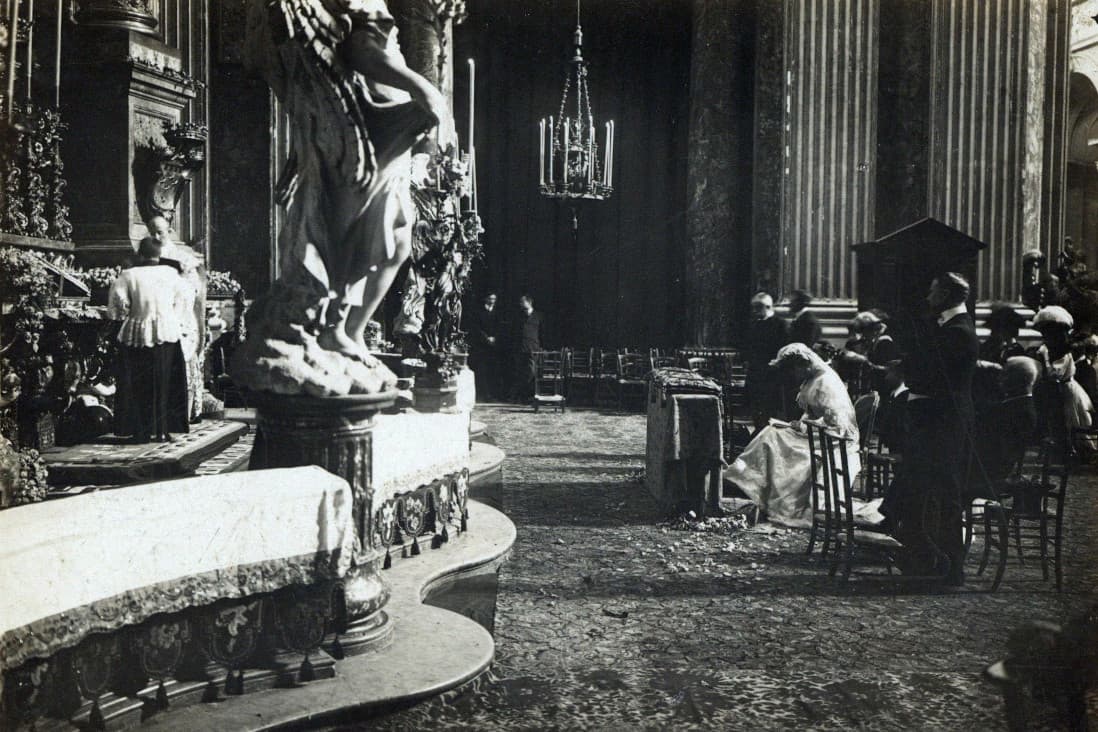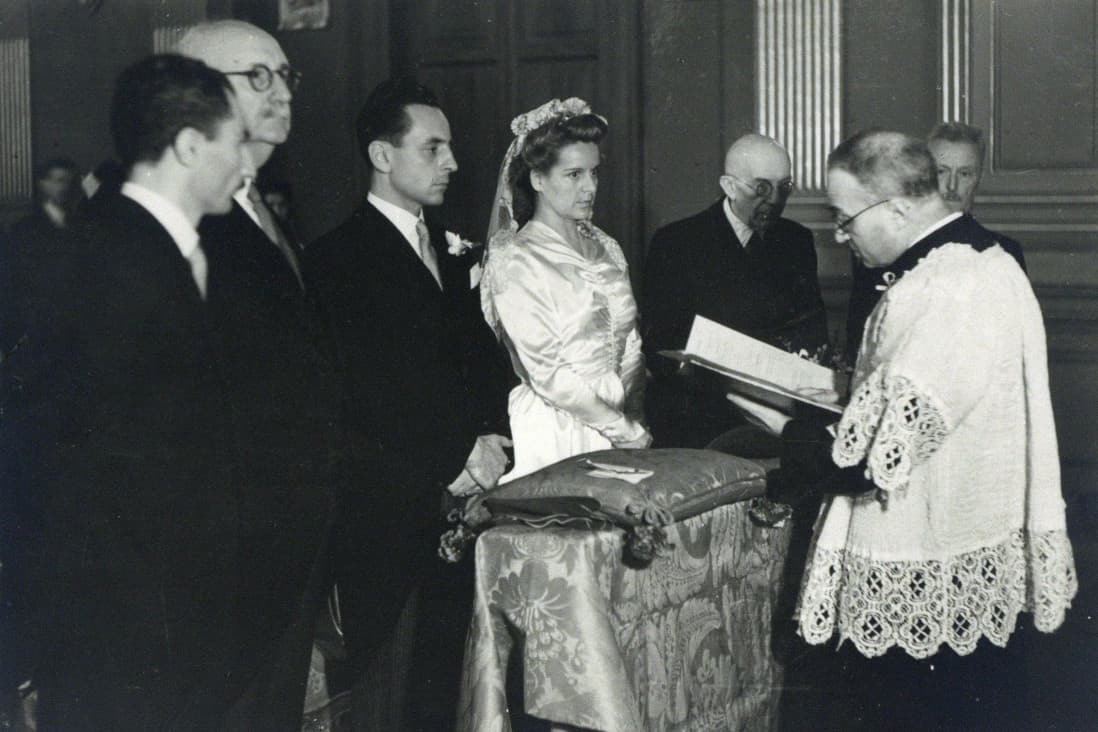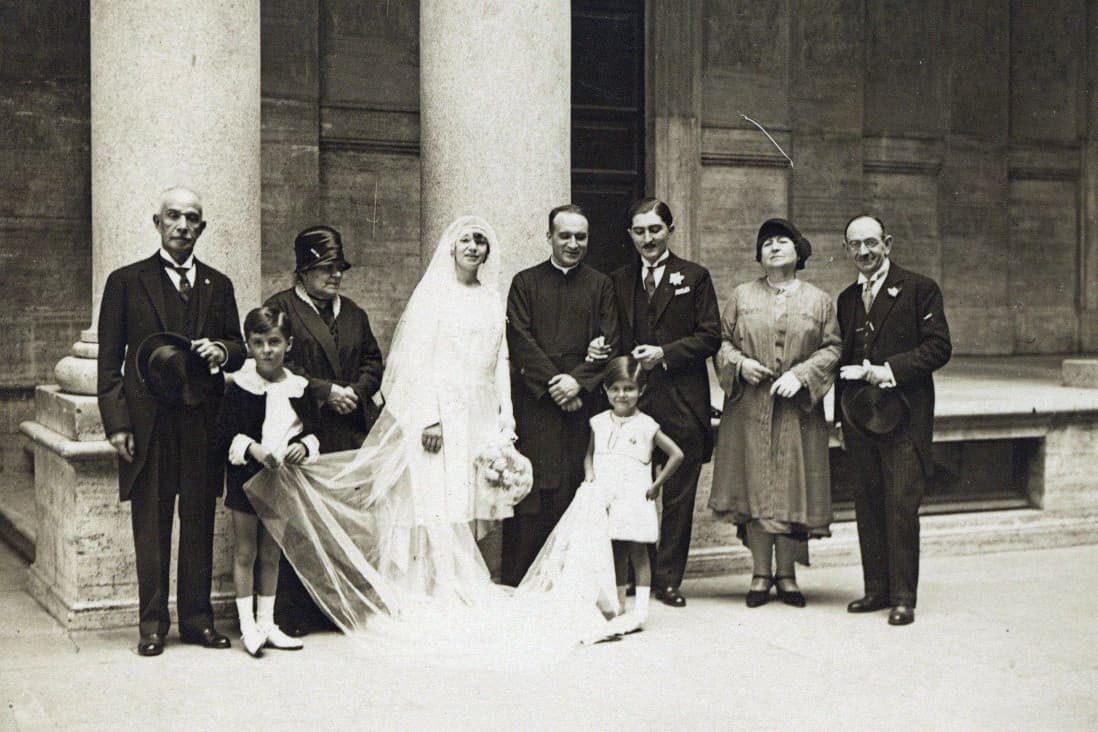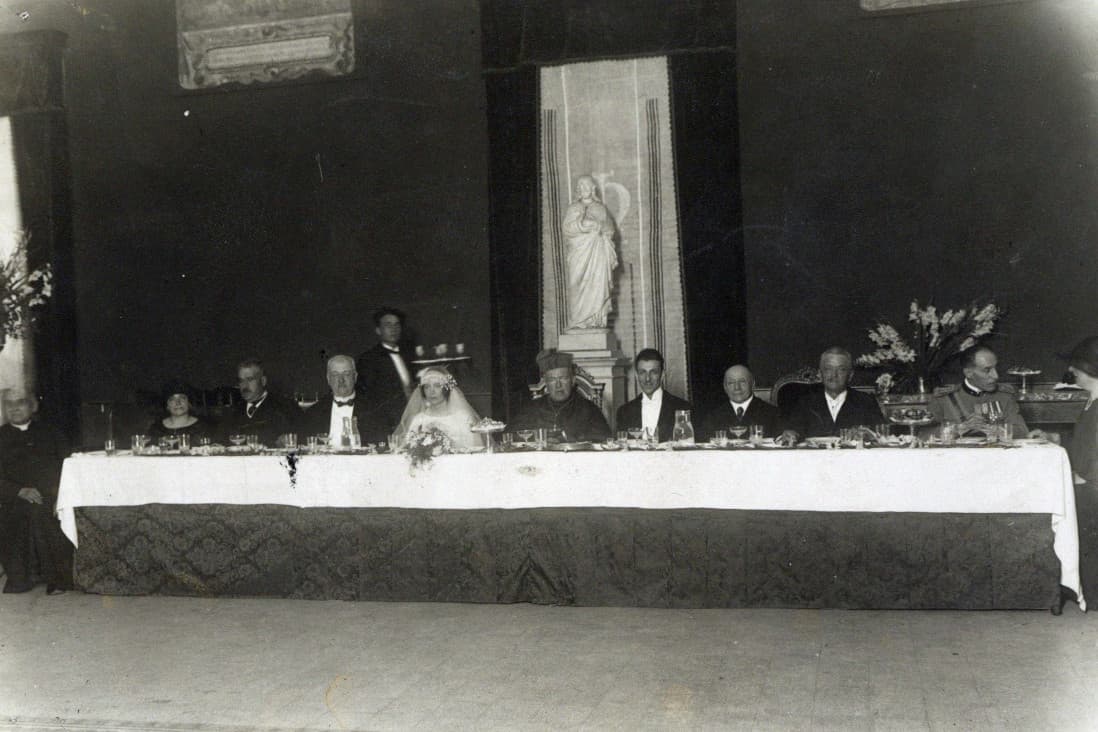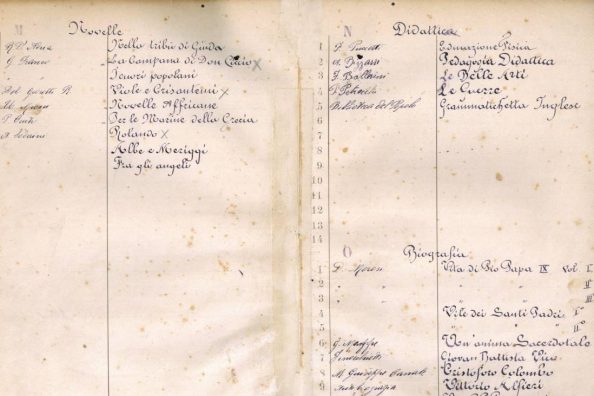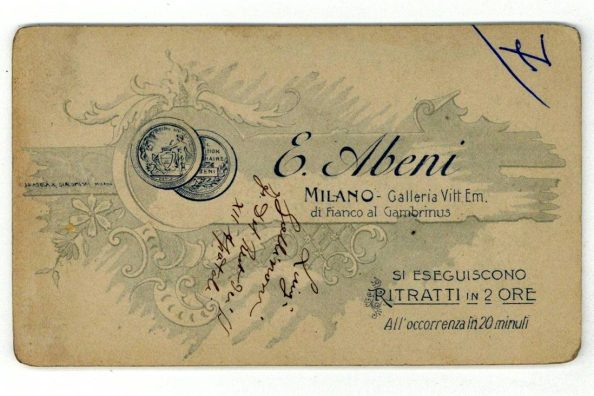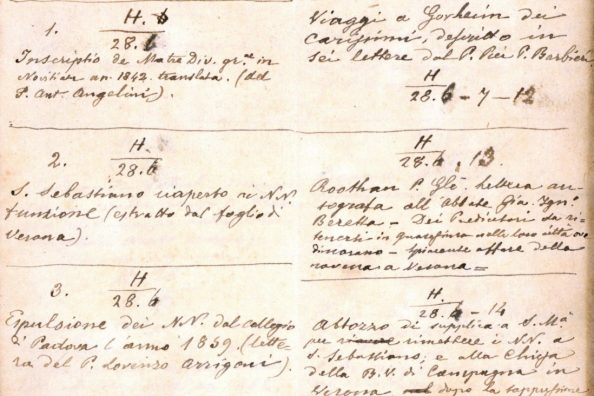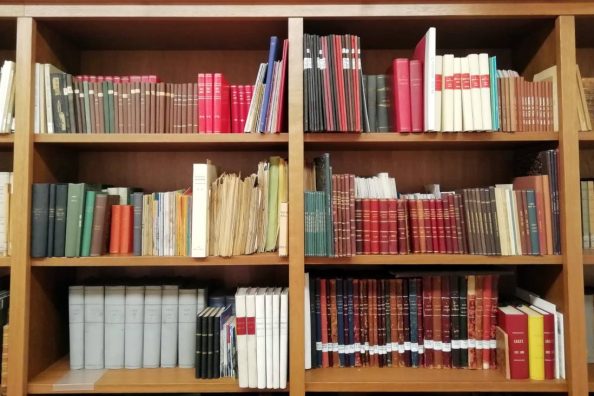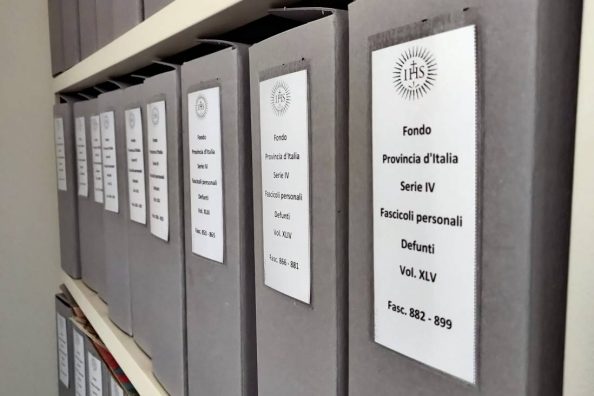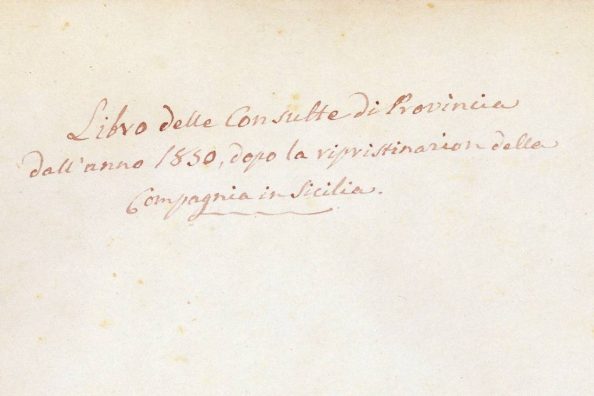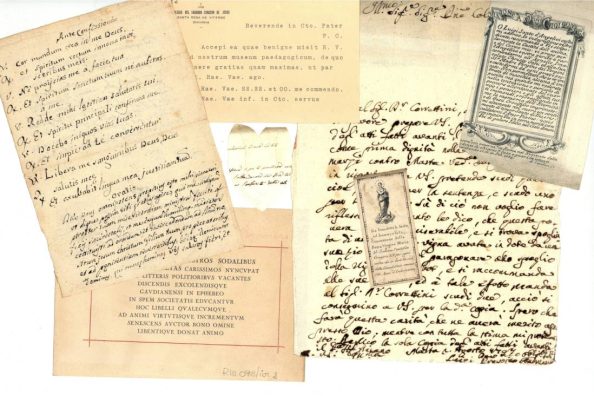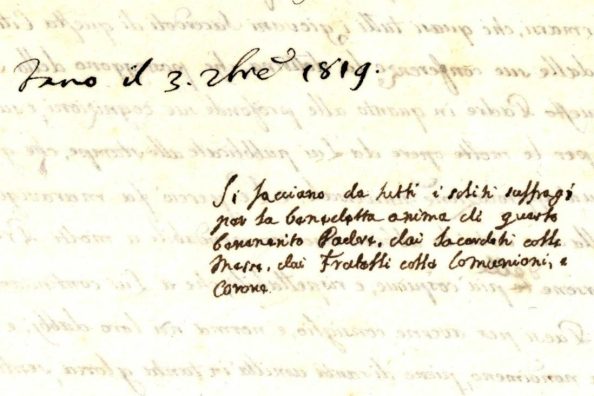Orange blossom

May and the summer months, we know, are the months of weddings. Why are we dedicating today’s column to this topic?
One would not expect to find much on this subject in the archives of the Society of Jesus, other than references in the spiritual notes for exercises for engaged couples or in the homilies that have survived in the personal funds of some of the fathers.
Actually, in the photographic fonds of our archives, there are many photos of newlyweds: during the ceremony or posed.
These are often the photos that were sent to the priest who had celebrated the mass, as a souvenir, or sent to one’s spiritual father or former Jesuit professor by the former student.
They are photographs of former students, relatives, grandchildren of Jesuits.
Many marriages of former pupils were celebrated in the same church as their own college, in the chapel of the Massimo Institute in Rome, for example, or in the Leo XIII church in Milan.
Thanks to the enduring bonds between alumni and Jesuits, photographs survive of many marriages celebrated in different decades.
Other brides are sisters, cousins or mothers of Jesuits who have kept some of the photographs together with some family papers, which have been included in the personal file.
In some cases, entire albums have been preserved, with family photos or photos of former students all immortalised on their wedding day.
In addition to transmitting the memory of these people, they also allow us to appreciate and study the evolution of bridal fashion for bride and groom, of the poses chosen for the souvenir photo, which in the early 20th century still followed very rigid patterns, changing since mid-century. Many shots were taken at certain moments of the liturgy, some photos show the couple during the banquet with the guests.
The dress styles, hats, headdresses, veils and accessories seen in the photographs can be the subject of in-depth study for those involved in the history of fashion and costume, but also for professionals and workers in the entertainment industry who often have to recreate outfits for films, dramas, musicals and costumed theatre performances.
These sources, especially for older photographs, are often a valuable souvenir for family members who no longer have documentary evidence at home and may request a copy.

